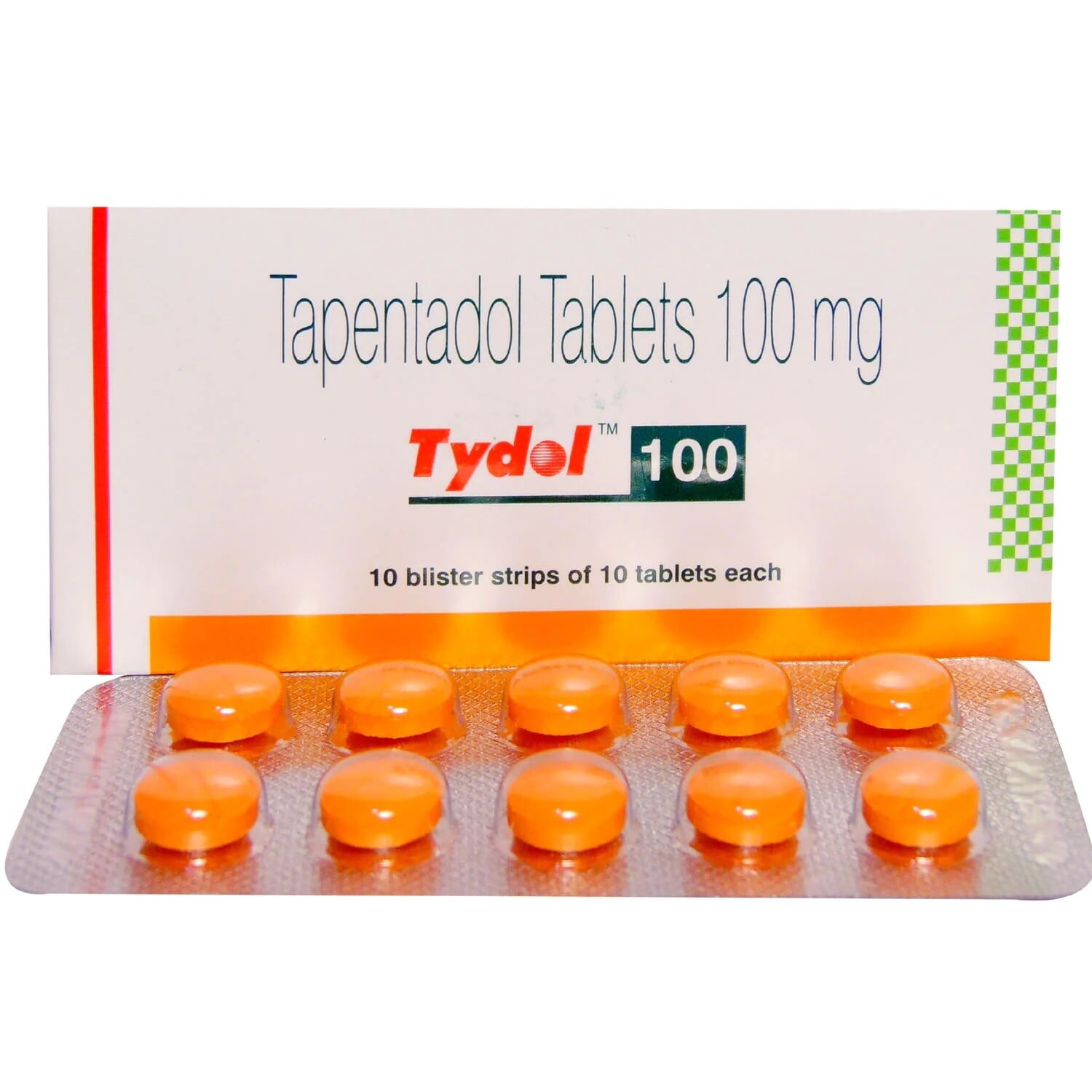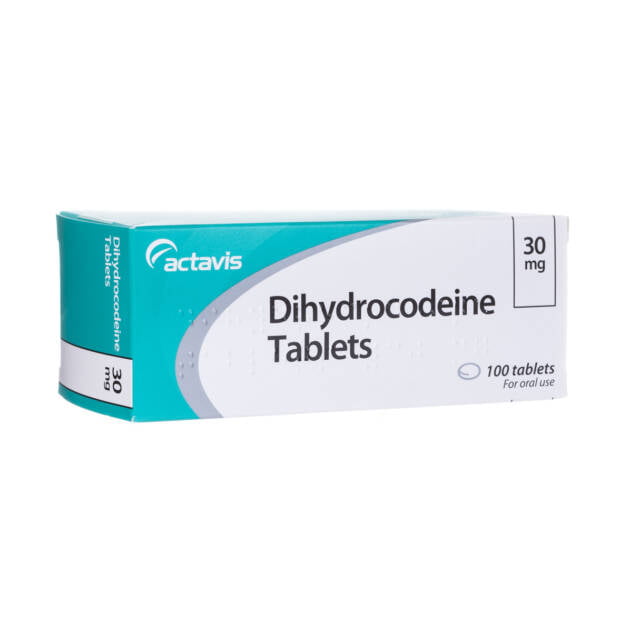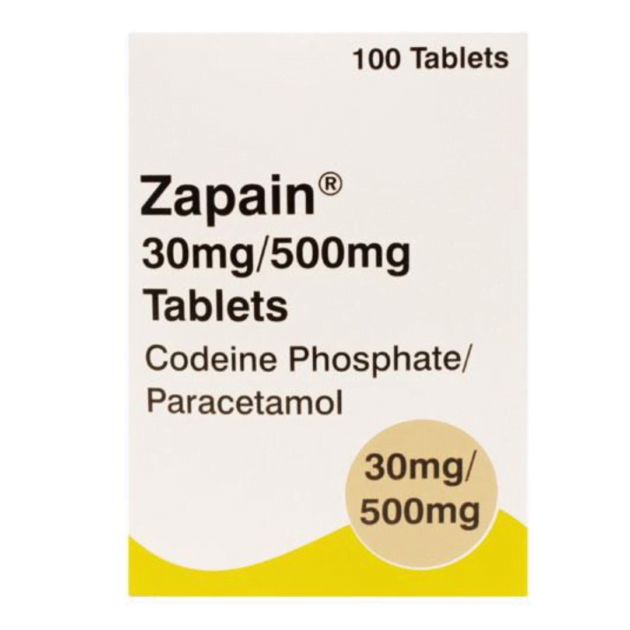Description
Three times stronger than Tramadol
Tapentadol is a painkiller used to treat moderate to severe pain. Similar to Tramadol, It works by altering the way we feel pain by affecting the central nervous system. As an opioid, it is often used when over-the-counter medications such as paracetamol and ibuprofen do not work.
It is often recommended when weaker, more commonly prescribed opioids such as Tramadol are not strong enough to fully treat the pain.
About Tapentadol
It was approved in 2011. It is licenced for the purposes of pain relief when opioids are the best treatment option. It is a controlled drug in the some countries, however it is available with a prescription from your doctor. If you are not able to get a prescription from your doctor and you are in need of pain relief, you can buy Tapentadol online from our pharmacy.
What is Tapentadol used to treat?
So, what is Tapentadol used for? As we mentioned briefly before, there are a number of conditions with pain as a symptom, or pain as the result of an illness or injury which the medication can be used for. Tapentadol indications, or uses, include the management of acute and chronic pain. Acute pain is the sudden onset of pain caused by a specific illness or injury, which will last for a short period of time. Examples of acute pain include injuries such a fracture, pain following surgery, or illnesses such as a kidney infection.
The mechanism behind acute pain can be useful as it informs your body that something is wrong. If you did not receive this information in the form of pain, you may not do anything to treat the problem. After you have undergone treatment however, the information is no longer required, and it becomes essential to use pain relief. Chronic pain is long-term pain which is unpleasant enough to require medical intervention. A multidisciplinary approach to treating chronic pain should be adopted and if possible, the underlying cause of the pain should be treated. This is not always possible however, and chronic conditions with pain as a symptom will usually require ongoing, daily pain relief. Some examples of chronic pain include the following:
- Neuropathic pain – This is pain felt throughout the body due to damaged nerve cells. Nerves are responsible for the perception of touch and pain, control of movements, and automatic functions such as heart rate and breathing. People with type 1 and type 2 diabetes can damage their nerves over time due to hyperglycaemia and this results in pain. This is called diabetic neuropathy and the pain is similar to that associated with fibromyalgia and peripheral neuropathy, which can also be managed with painkillers.
- Cancer related pain – Cancer is a complex disease, and the associated pain can be either acute or chronic and depends on multiple factors. Acute pain is often associated with treatment such as chemotherapy, while chronic pain can be due to an increase in tumour size which can cause it to put pressure on bones or nerve tissues.
- Arthritis – Osteoarthritis and rheumatoid arthritis are the two main types of the disease. They are both progressive which means they will continue to get worse over time and there is no cure. Osteoarthritis causes the bones around your joints to wear away over time, reducing mobility and resulting in pain. Rheumatoid arthritis is an autoimmune disease which causes inflammation in the tissues around the joints. Symptoms can be managed with pain relief however, which can increase your quality of life.
Tapentadol Mechanism of Action
The mechanism of action of Tapentadol is similar to other opioid based medications. It works primarily by targeting opioid receptors in the central nervous system. A key difference, however, is that unlike most other opioid medications it has a dual mechanism of action, so as well as being an opioid agonist it is also inhibits the reuptake of noradrenaline, making it a potent pain killer. The central nervous system is made up of the brain and spinal cord.
The nerve cells, also called neurons, connect the central nervous system to the peripheral nervous system. The peripheral nervous system spreads to the rest of the body and ensures messages are passed back and forth. These messages are transmitted between neurons using electrical signals, and this controls all of our functions and perceptions, including the perception of touch and pain. In between each neuron is a synapse, which is a miniscule gap, and this is where most receptors are located.
Chemicals called neurotransmitters regulate the electrical activity within the central and peripheral nervous system and these can be either inhibitory or excitatory. Medication can cause the production of different neurotransmitters. As we mentioned before, Tapentadol has a dual mechanism of action which means that there will be increased production of opioids and well as noradrenalin. The increased levels of noradrenalin is due to the inhibition of naturally occurring noradrenaline from being reabsorbed back into the neuron via the synapse. Opioids reduce the sensation of pain by reducing the frequency of nociceptive (pain) signals thereby increasing your pain threshold.
The precise noradrenaline mechanism of action of is unclear, however clinical trials show that increased levels significantly reduce the perception of pain.
Tapentadol Duration of Action
Tapentadol is absorbed rapidly and starts to work after just half an hour on average, reaching peak plasma concentration after about 75 minutes. This quick onset of action is useful to get your pain under control quickly and if your symptoms come on suddenly. The absorption rate is quicker if the medication is taken on an empty stomach, however the level of absorption is not affected if you take it with food. The bioavailability of Tapentadol is fairly low at just over 30%, which means that almost 70% is lost in the process of first pass metabolism. First mass metabolism occurs as the medication travels from the gastrointestinal (GI) tract to the brain where it exerts its effects.
Despite the low bioavailability this is a potent medication. Its high potency is partly because it targets opioid receptors directly and doesn’t rely on metabolites to achieve its therapeutic benefits. The Tapentadol half-life is 4 hours, with a duration of action of 4 to 6 hours, which is how long you will feel the effects of the medication before needing to take your next dose. Tapentadol 50 mg slow release may be indicated for conditions which require a consistent level of pain relief throughout the day, and this will have a longer duration of action. It does, however, have a slower onset of action and doesn’t peak to the same height as immediate release medication.
The elimination half-life is the time it takes for half of the medication to be metabolised and eliminated from the body. This means that the medication will be in your body and detectable for at least twice this amount of time. As it is an opioid based medication, this will show up on most tests.
Tapentadol Dosing Information
Tapentadol dosage will vary depending on whether you are treating acute or chronic pain, as well as the severity of your pain. The lowest therapeutic dosage should always be used and increased as necessary. Tapentadol 50 mg is the usual starting dose for most conditions. If you are taking it for acute pain, you should either take it in the morning and re-dose as necessary, or as and when you feel your symptoms come on. Make sure that you space the doses out evenly in the day to prevent too much building up in your system at once, which could be dangerous.
For chronic pain you should take your Tapentadol capsules in the morning and throughout the day as necessary. Higher doses can be used for more severe pain, but you should increase your dose slowly to stop your tolerance building up too quickly which would reduce the efficacy of the medication. Tapentadol 100 mg is the maximum single dose to be taken at once. Injecting Tapentadol should only be practiced by a suitably trained medical professional and never attempted at home.
Potential Tapentadol Side Effects
Every medication has the potential to cause side effects and before you buy Tapentadol it is important to be aware of any so you can make an informed decision. Most people do not experience any side effects and for those that do they are usually mild and go away after a short period of time. Some of the more common side effects include:
- Nausea
- Dizziness
- Drowsiness
- Dry mouth
- Headache
- Itching
You do not have to stop taking the medication if you experience any of the above side effects unless they bother you. It is not common, but some people experience serious side effects. If you experience any of the following side effects, you should stop taking it and seek medical assistance:
- Hallucinations or delusions
- Difficulty breathing
- Seizures
Again, this is very rare, but some people experience a severe allergic reaction called anaphylaxis. Symptoms include swelling of the face and lips, a rash on the face and neck, difficulty breathing, and wheezing. If you experience these symptoms you should go to A&E immediately.
Tapentadol vs Tramadol
Is Tapentadol the same as Tramadol? They are structurally very similar medications and they both have dual mechanisms of action. The former is a more potent noradrenaline reuptake inhibitor while the latter is a stronger serotonin reuptake inhibitor. The former is also the more potent of the two medications as it does not require metabolites to work. The closest Tapentadol equivalents are oxycodone and hydrocodone in terms of strength, but Tapentadol has fewer side effects so is a better tolerated medication. Tapentadol 50 mg tablets are stronger than their Tramadol equivalent and again, have fewer side effects, so many view this as the superior medication. They should never be taken at the same time as they are both opioid based medications.
Contraindications Associated with Tapentadol
Before you buy Tapentadol it is important to be aware of any contraindications. Tapentadol drug interactions include the following:
- Other opioid based medications
- Barbiturates
- Benzodiazepines
We are often asked ‘can I take paracetamol with Tapentadol?’ and the answer is yes. Taking the two medications in conjunction with one another can increase the efficacy of the pain-relieving properties. Additionally, Tapentadol and pregabalin can be taken at the same time for more effective pain relief if you are suffering from severe symptoms. It should be noted that Tapentadol and alcohol do not mix, and you should not drink while taking this medication.
Considerations Before You Buy Tapentadol
Before you buy Tapentadol it is important to consider whether this is the best treatment option for you. There are certain groups who should avoid the medication. If any of the following apply to you then you should consult with your doctor before taking it:
- You are allergic to any of the ingredients
- You have been treated for addiction in the past
- You have breathing problems such as obstructive sleep apnoea
- You are pregnant or breastfeeding
Additionally, it should ideally be used as a short-term treatment option as it has the potential for physical dependence it. This isn’t always an option when it comes to treating chronic conditions. In these circumstances a consistent dosage should be maintained to prevent symptoms becoming too bad. If you have been taking it long-term and need to stop taking it then you should gradually taper off the medication as stopping it abruptly can cause unpleasant withdrawals.



